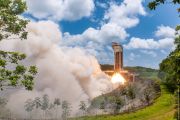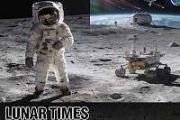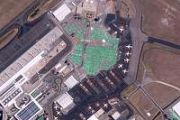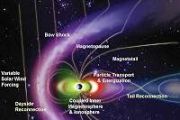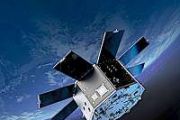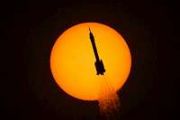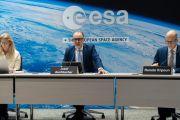
Copernical Team
The Milky Way will soon be visible in the California sky: How and when to see it
This request seems a bit unusual, so we need to confirm that you're human. Please press and hold the button until it turns completely green. Thank you for your cooperation!
Press and hold the button
If you believe this is an error, please contact our support team.
185.132.36.159 : 70daa195-1b23-4d25-8732-536cb8f2
Lower-frequency sonic booms from Falcon 9 launches can feel like mini-earthquakes
This request seems a bit unusual, so we need to confirm that you're human. Please press and hold the button until it turns completely green. Thank you for your cooperation!
Press and hold the button
If you believe this is an error, please contact our support team.
185.132.36.159 : 1c0caaf4-4176-4f69-ac50-4f86579a
Astrobee learns to transport soft cargo: Open-source simulator models real ISS challenges
This request seems a bit unusual, so we need to confirm that you're human. Please press and hold the button until it turns completely green. Thank you for your cooperation!
Press and hold the button
If you believe this is an error, please contact our support team.
185.132.36.159 : 0f1bd450-02ad-49e9-810f-92997ae5
Galileo Second Generation
 Video:
00:03:57
Video:
00:03:57
Europe’s Galileo is the world’s most precise satellite navigation system, providing metre-level accuracy to billions of users. ESA and European industry are preparing a new generation of satellites for the European Union, the Galileo Second Generation or G2, that will revolutionise the fleet with enhanced capabilities.
Satellite Data Confirms First Ship-Based Detection of Landslide-Triggered Tsunami
 For the first time, scientists have detected a tsunami generated by a landslide using satellite data from a ship's navigation system, marking a significant step forward in early warning technology for coastal communities. The breakthrough, led by researchers from CIRES and the University of Colorado Boulder (CU Boulder), was published in the journal Geophysical Research Letters.
Landslide-
For the first time, scientists have detected a tsunami generated by a landslide using satellite data from a ship's navigation system, marking a significant step forward in early warning technology for coastal communities. The breakthrough, led by researchers from CIRES and the University of Colorado Boulder (CU Boulder), was published in the journal Geophysical Research Letters.
Landslide- NASA Studies Uncover New Insights into Interiors of Moon and Vesta
 NASA researchers have made significant strides in understanding the internal structures of the Moon and the asteroid Vesta through advanced gravity mapping, offering new insights into the formation and composition of these celestial bodies.
The first study, published May 14 in Nature, introduced a sophisticated gravity model of the Moon that captures tiny variations in its gravitational fi
NASA researchers have made significant strides in understanding the internal structures of the Moon and the asteroid Vesta through advanced gravity mapping, offering new insights into the formation and composition of these celestial bodies.
The first study, published May 14 in Nature, introduced a sophisticated gravity model of the Moon that captures tiny variations in its gravitational fi A Tough Drill at Witch Hazel Hill
 After a busy few months exploring the outer slopes of the Jezero crater rim at an area named "Witch Hazel Hill," the Perseverance Science Team was eyeing another sample of these truly ancient rocks, which likely predate Jezero crater itself.
The target? A rock containing spherules, which could shed a light on volcanic- or impact-related processes occurring in Mars' most ancient past. After
After a busy few months exploring the outer slopes of the Jezero crater rim at an area named "Witch Hazel Hill," the Perseverance Science Team was eyeing another sample of these truly ancient rocks, which likely predate Jezero crater itself.
The target? A rock containing spherules, which could shed a light on volcanic- or impact-related processes occurring in Mars' most ancient past. After What a German Start-Up's First Test Could Mean for the Space Industry
 On April 22nd, SpaceX's Bandwagon-3 rideshare mission took off from Cape Canaveral. Alongside the normal payload of satellites, there was a capsule from a German space start-up - Phoenix 1. This was the inaugural payload of ATMOS Space GmbH, and the first orbital test of its inflatable aerodynamic decelerator (IAD).
To re-enter from low-Earth orbit, most spacecraft either use a tile-based
On April 22nd, SpaceX's Bandwagon-3 rideshare mission took off from Cape Canaveral. Alongside the normal payload of satellites, there was a capsule from a German space start-up - Phoenix 1. This was the inaugural payload of ATMOS Space GmbH, and the first orbital test of its inflatable aerodynamic decelerator (IAD).
To re-enter from low-Earth orbit, most spacecraft either use a tile-based Spire Global Wins U.S. Space Force Contract Worth Up to $237 Million
 Spire Global, Inc. (NYSE: SPIR), a leading provider of space-based data and analytics, has secured a position on the U.S. Space Force's Space Systems Command Indefinite Delivery/Indefinite Quantity (IDIQ) contract under the Space Test Experiments Platform (STEP) 2.0 program. This 10-year agreement has a total potential value of $237 million and forms part of the Department of Defense's broader S
Spire Global, Inc. (NYSE: SPIR), a leading provider of space-based data and analytics, has secured a position on the U.S. Space Force's Space Systems Command Indefinite Delivery/Indefinite Quantity (IDIQ) contract under the Space Test Experiments Platform (STEP) 2.0 program. This 10-year agreement has a total potential value of $237 million and forms part of the Department of Defense's broader S 
 Image:
Streaks on Mars
Image:
Streaks on Mars 










